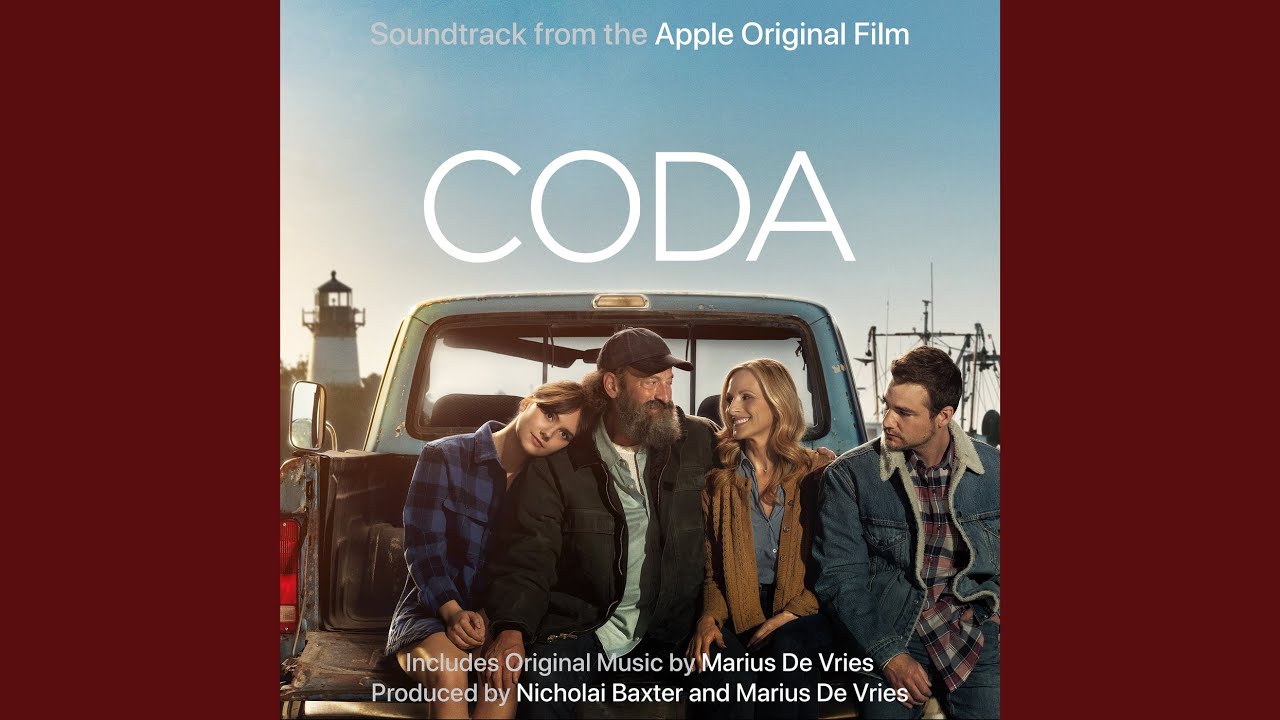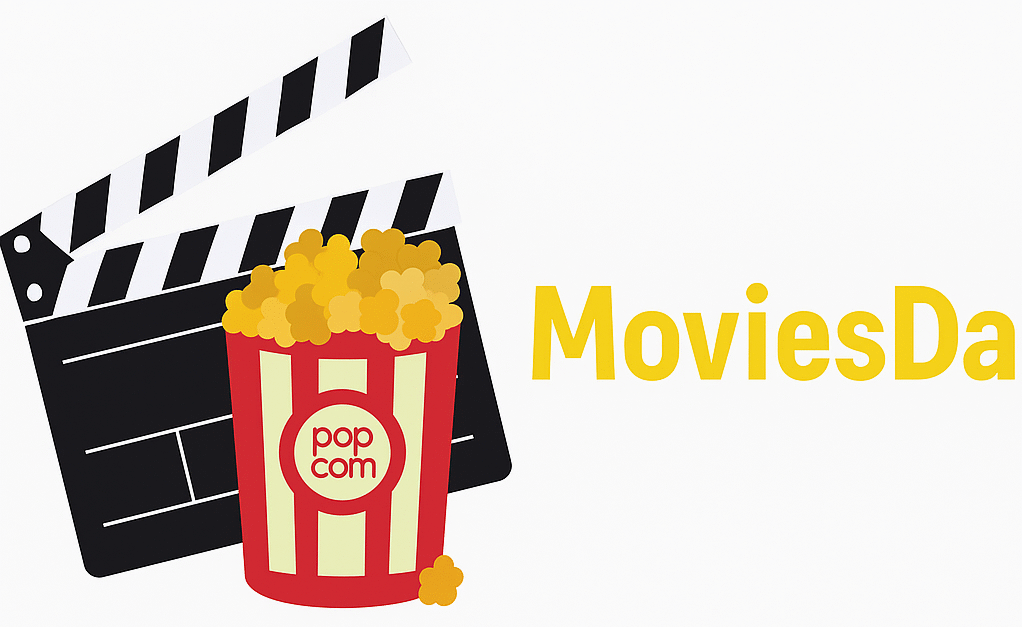📌 Basic Information
-
Title: CODA
-
Released: 2021
-
Director: Sian Heder
-
Genre: Drama / Coming-of-Age / Family
-
Language: English and American Sign Language (ASL)
-
Runtime: ~111 minutes
-
Based on: La Famille Bélier (2014, French film)
🧠 What Does “CODA” Mean?
CODA stands for Child of Deaf Adults. It refers to a hearing child born to one or more deaf parents. The title encapsulates the central conflict and emotional thread of the film: a hearing girl torn between her love for her family and her desire to pursue her own dreams.

🧵 Plot Overview
The story follows Ruby Rossi, a 17-year-old girl and the only hearing member of her working-class, deaf family in Gloucester, Massachusetts. Her family—parents Frank and Jackie, and her older brother Leo—run a small fishing business and rely on Ruby to interpret for them in their interactions with the hearing world.
Ruby, though shy and insecure, has a hidden talent: she loves to sing, and she’s good at it. When she joins her high school choir and forms a connection with her music teacher, Mr. Bernardo Villalobos (Mr. V), her talent is discovered. Mr. V encourages her to audition for the prestigious Berklee College of Music.
However, this sets up a difficult conflict.
Ruby is torn between two worlds:
-
Her family, who need her as their interpreter, especially as their fishing business faces regulatory and financial pressures.
-
Her own dreams, which mean leaving them behind—possibly for good.
🌊 Key Themes
1. Family and Responsibility
Ruby is a lifeline for her family. The Rossis depend on her in almost every aspect of life, from negotiating with buyers to dealing with doctors and regulators. Her emotional burden is immense, and the film portrays how invisible labor—especially that of children of marginalized families—can be both a gift and a trap.
2. Finding Your Voice (Literally and Metaphorically)
As Ruby trains her singing voice, she also begins to find her emotional voice—standing up for herself, expressing her needs, and envisioning a future beyond what she’s always known.
3. Deaf Culture and Identity
CODA is groundbreaking in that it presents Deaf characters as complex, fully human individuals, not defined by their disability. It features Deaf actors in Deaf roles and uses American Sign Language throughout. The movie shows how the Deaf community has its own rich culture, humor, pride, and challenges.
4. The Struggle for Independence
The story captures the universal tension between duty to family and self-actualization—especially poignant when your family needs you and doesn’t understand your passion.
👨👩👧👦 Main Characters
-
Ruby Rossi (Emilia Jones) – A teenage girl, the only hearing member of her family, torn between family loyalty and personal ambition.
-
Frank Rossi (Troy Kotsur) – Ruby’s father; loud, funny, earthy, and loving. Deeply supportive, even if he doesn’t always understand Ruby’s world.
-
Jackie Rossi (Marlee Matlin) – Ruby’s mother; strong-willed and proud. She fears Ruby’s singing is a rejection of the family.
-
Leo Rossi (Daniel Durant) – Ruby’s older brother, also Deaf, who wants to prove he can handle responsibilities without Ruby’s help.
-
Mr. V (Eugenio Derbez) – Ruby’s passionate choir teacher who recognizes her talent and pushes her to believe in herself.
🏆 Critical Acclaim and Awards
CODA was widely acclaimed and made history at the 94th Academy Awards by winning:
-
Best Picture
-
Best Supporting Actor (Troy Kotsur – the first Deaf male actor to win an Oscar)
-
Best Adapted Screenplay
It was praised for its emotional honesty, authentic representation of Deaf culture, and powerful performances, especially from Troy Kotsur and Emilia Jones.
🎼 Music in CODA
Music plays a central role in the film, especially since it’s the medium that Ruby loves—but that her family can’t experience the way she does. A particularly emotional moment comes when Ruby performs Joni Mitchell’s “Both Sides Now” for her audition. Her father asks her to sing it again for him at home, and he “feels” the music by placing his hands on her throat and chest. It’s a deeply moving symbol of connection beyond words.
💬 Why CODA Is Special
CODA is not just a story about a girl who can sing. It’s about belonging, difference, family love, and the silent sacrifices many children make for their parents. It tells a very specific story, but it touches something universal.
It doesn’t present Deafness as a tragedy—it presents love, identity, and family as complex, beautiful, and sometimes messy parts of life. That’s what makes it one of the most heartfelt and human films of recent years.
🎬 CODA (2021) – Full Story line Summary (In-Depth)
ACT 1 – INTRODUCTION TO RUBY’S WORLD
🎣 Life at Sea
We open on Ruby Rossi, a 17-year-old high school senior, singing while working on her family’s fishing boat off the coast of Gloucester, Massachusetts. She’s the only hearing member of her family: her father Frank, her mother Jackie, and her older brother Leo are all Deaf.
The Rossis rely on Ruby to act as their interpreter, especially in business—negotiating prices for their daily catch, dealing with regulations, and talking to doctors or strangers.
🏫 At School
At school, Ruby is awkward, isolated, and teased. She smells like fish and struggles socially. When she signs up for choir class, it’s partly to be near a boy she likes—Miles, a shy but sweet classmate.
Ruby surprises everyone, including herself, when her singing voice stuns the choir teacher, Mr. Villalobos (Mr. V). He sees talent and insists she try out for a duet with Miles.
ACT 2 – RUBY DISCOVERS HER VOICE
🎵 Choir Practice and Discovery
Mr. V challenges Ruby to believe in herself. He gives her private lessons, and while Ruby is nervous, her confidence starts to grow. Singing becomes her outlet—a world where she’s not the interpreter, not the helper, but simply herself.
Mr. V suggests that she audition for Berklee College of Music, a prestigious music school in Boston. Ruby is shocked—she never saw that as an option. But he sees potential and pushes her to prepare.
👨👩👧 Family Conflict
At home, things become complicated.
-
The Rossis are starting their own fishing co-op to avoid being underpaid by buyers.
-
Ruby’s interpreting becomes even more essential, especially during meetings and inspections.
-
Leo wants to take more responsibility, but the family doesn’t trust he can handle business without Ruby.
Meanwhile, her parents feel left out of Ruby’s new world. They can’t hear her sing, so they don’t understand what it means to her. Her mother, Jackie, even asks: “If I were blind, would you want to paint?”
This wounds Ruby deeply.
ACT 3 – EVERYTHING COLLIDES
💔 The Breaking Point
Ruby’s obligations mount. She’s:
-
Waking up at 3 a.m. to fish with her family,
-
Skipping choir rehearsals,
-
Falling behind in school.
She bombs a critical practice audition with Mr. V, and he scolds her: “If you’re not going to take this seriously, don’t waste my time.”
Ruby finally quits choir, deciding her family needs her more.
🐟 The Coast Guard Inspection
On a critical day, Ruby is absent from an inspection. Without her interpreting, her family fails to respond to the Coast Guard’s warnings. Their license is suspended, and they face heavy fines.
Frank and Leo are devastated. Ruby feels responsible, but Leo finally confronts her, saying: “You’re not the only one who can help this family.”
ACT 4 – A CHOICE AND A PERFORMANCE
🎶 The School Concert
Ruby performs at her school choir concert. Her family sits in the audience, watching. They can’t hear her sing, but they watch the audience react—smiles, tears, clapping. They finally begin to understand how special her talent is.
The most emotional moment comes after the concert:
-
Ruby and her father sit on the tailgate of their truck.
-
He asks her to sing for him.
-
He puts his hands on her throat and chest to feel the vibration of her voice.
-
He tears up, realizing how powerful her gift is.
This scene is the emotional climax of the film.
ACT 5 – THE AUDITION
🚗 The Decision
With her family’s support, Ruby decides to audition for Berklee after all. But she’s missed the scheduled date.
In a beautiful turn, the Rossis shut down their fishing operation for a day, drive her to Boston, and wait outside while she auditions.
🎵 The Audition Room
Ruby sings Joni Mitchell’s “Both Sides Now”. Halfway through, she glances out the window at her family and, for the first time, begins signing the lyrics in ASL as she sings.
It’s not just a performance—it’s Ruby expressing herself to both her worlds at once.
EPILOGUE – MOVING ON
Ruby is accepted into Berklee.
-
Her family drops her off at school.
-
Her mother cries and gives her a keepsake.
-
Her father, proud and emotional, signs: “Go.”
-
Ruby hugs them, then walks toward her future.
The film ends with Ruby smiling, finally free to become herself, while still holding her family in her heart.
🏁 THE END
💡 What CODA Is Truly About
-
It’s not just a coming-of-age film—it’s about the invisible roles many kids take on in families that face marginalization.
-
It’s about expressing who you are, especially when you feel guilty for wanting more.
-
And most of all, it’s about love without sound—a reminder that true connection doesn’t require words, or even hearing.

